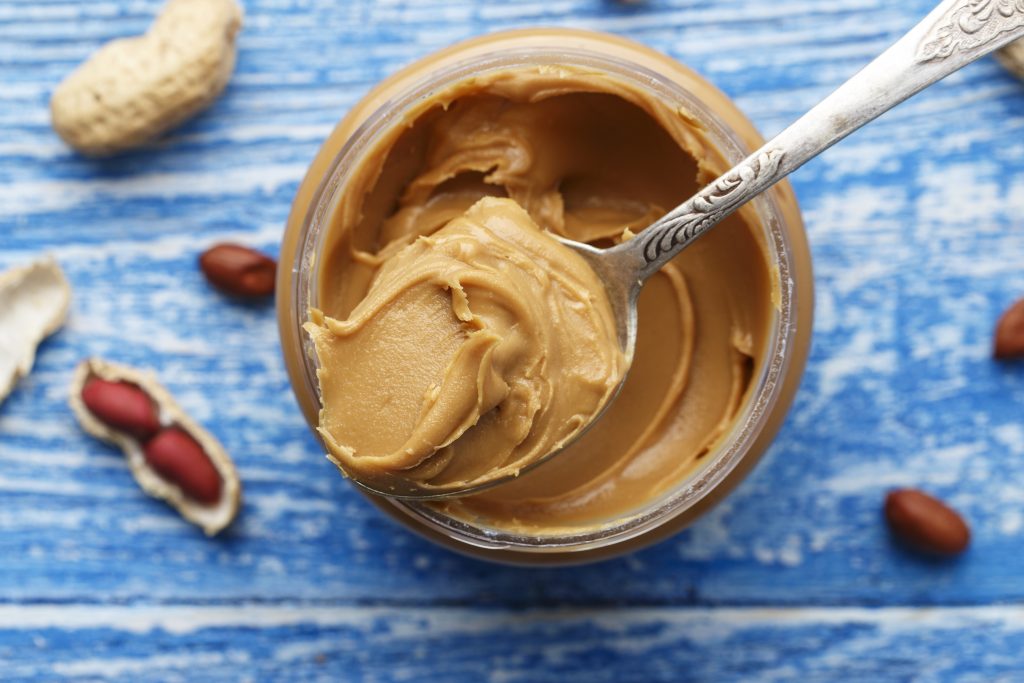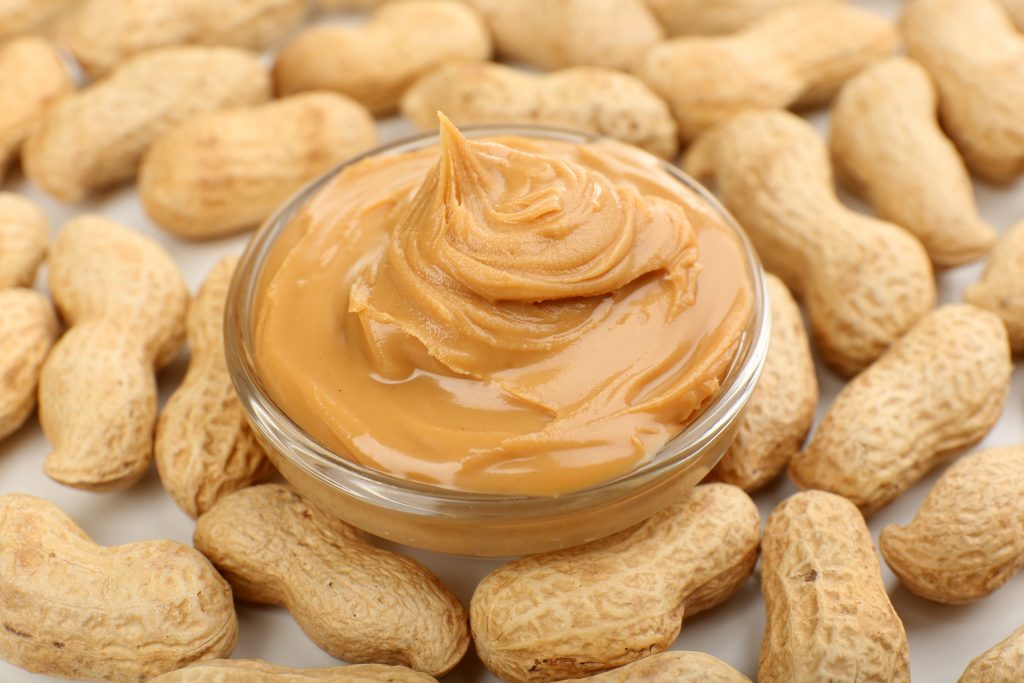This article was updated on November 11th, 2020.
Whenever November rolls around, I have to admit, I get a little sad. Here in New York City, the weather turns from the bright, sunny, and crisp fall days of October, to the dark, damp, and rainy days of November. And with Thanksgiving so late in the month this year, it can feel even more like you’re walking through a Guns N’ Roses song.
But there is a delicious, sticky, crave-able treat here to save you… peanut butter! November is National Peanut Butter Lover’s Month, and with peanut consumption reaching an all-time high this year at 7.6 pounds per person, according to the USDA and U.S. Census, we thought it was necessary to refresh the exciting history behind America’s favorite food and share some fascinating facts about peanut butter!
Fascinating Facts About Peanut Butter!
Contrary to popular belief, George Washington Carver did not invent peanut butter! While he did invent over 300 uses for the peanut, including of all things, shampoo, the earliest recording of peanut butter was by the Aztecs. The peanut butter they made was a little different than we’re used to: they were simply mashed peanuts into a paste, without the use of oils or other additives like salt.

Peanut butter, as we know it can be attributed to four other men. In 1884, Marcellus Gilmore Edson of Canada patented a peanut paste, which was the finished product from milling roasted peanuts between two heated surfaces. Soon after in 1895, Dr. John Harvey Kellogg (you might recognize him as the creator of Kellogg Cereal) patented a process for creating peanut butter from raw peanuts. Believe it or not, he marketed it as a healthy protein substitute for patients without teeth (though we’re pretty sure the vegans and vegetarians who rely on it as a protein source would disagree!)
In 1903, Dr. Ambrose Straub of St. Louis, Missouri, patented a peanut-butter-making machine, which made peanut butter commercially available to the greater American public. Finally, in 1922 chemist Joseph Rosefield invented a process for making smooth peanut butter that kept the oil from separating. This process used partially hydrogenated oil, and in 1928 he licensed his invention to the company that created Peter Pan peanut butter. In 1932 he began producing his own peanut butter under the name. You may have heard of it: Skippy.
The rest, as they say, is history. But where would we be if we didn’t offer you some fun facts about peanut butter as well?

These fascinating facts about peanut butter facts, taken from The National Peanut Board, really show how peanut butter has permeated not only the American diet, but the American heart as well:
- It takes about 540 peanuts to make a 12-ounce jar of peanut butter.
- By law, any product labeled “peanut butter” in the United States must be at least 90 percent peanuts.
- It takes fewer than 5 gallons of water to produce 1 ounce of peanuts. (Bonus fact: 1 ounce of almonds takes 80 gallons).
- The average peanut farm is 200 acres.
- The Huffington Post (Sept. 2014) asked, “What makes the best peanut butter and jelly sandwich? Results show: 36% say strawberry jam is favorite (grape is 31%); favorite bread is white bread (54%); favorite type of peanut butter is smooth (56%) and a whopping 80% like their PB & J with the crust left on the sandwich. Discover why PB&J is the best sandwich ever.
- Two peanut farmers have been elected president of the USA – Virginia’s Thomas Jefferson and Georgia’s Jimmy Carter.
- Astronaut Alan Shepard brought a peanut with him to the moon. Read about making a PB&J on the International Space Station.
- Former President Bill Clinton says one of his favorite sandwiches is peanut butter and banana; also reported to have been the favorite of Elvis “the King” Presley.
- There are six cities in the U.S. named Peanut: Peanut, California; Lower Peanut, Pennsylvania; Upper Peanut, Pennsylvania; Peanut, Pennsylvania, Peanut, Tennessee; and Peanut West Virginia.
- According to Little Brownie Bakers, cookie bakers use about 230,000 pounds of peanut butter per week to bake Girl Scout’s Do-si-dos and Tagalongs. Click here for a peanut butter cookie recipe.
- Women and children prefer creamy peanut butter, while most men opt for chunky.
- People living on the East Coast prefer creamy peanut butter, while those on the West Coast prefer the crunchy style.
- Boiled peanuts are considered a delicacy in the peanut growing areas of the South. Freshly harvested peanuts are boiled in brine until they are of a soft bean-like texture.
- Goober—a nickname for peanuts—comes from “nguba”, the Congo language name for peanut.
- Peanuts are sometimes called “ground nuts” or “ground peas” because peanuts grow underground.
- The nub between two peanut halves is an embryo. Learn more about how peanuts grow.
- George Washington Carver was known as the “plant doctor” and the “grandfather of peanuts”. Though he did not invent peanut butter, he discovered many ways to use peanuts and innovative farming methods, including crop diversification and soil conservation.
- Peanut butter was originally made for people with no teeth.
- The average European eats less than 1 tbsp of peanut butter a year.
- The furthest thrown a peanut has ever been thrown was 124.4 feet.
- There are four different types of peanuts – Runner, Valencia, Spanish, and Virginia.
- There are enough peanuts in one acre to make 35,000 peanut butter and jelly sandwiches. (Source: USDA NASS data)
- Every year Americans eat enough peanut butter to coat the floor of the Grand Canyon.
- In a high-pressure environment, peanut butter can be turned into diamonds.
So this November, dust off your rainboots, head to your nearest grocery store, and grab some peanut butter! If you need some inspiration for your peanut butter creations, check out this Eco18 peanut butter favorite!
 Food
Food Farmers
Farmers Sustainable Living
Sustainable Living Living Planet
Living Planet News
News